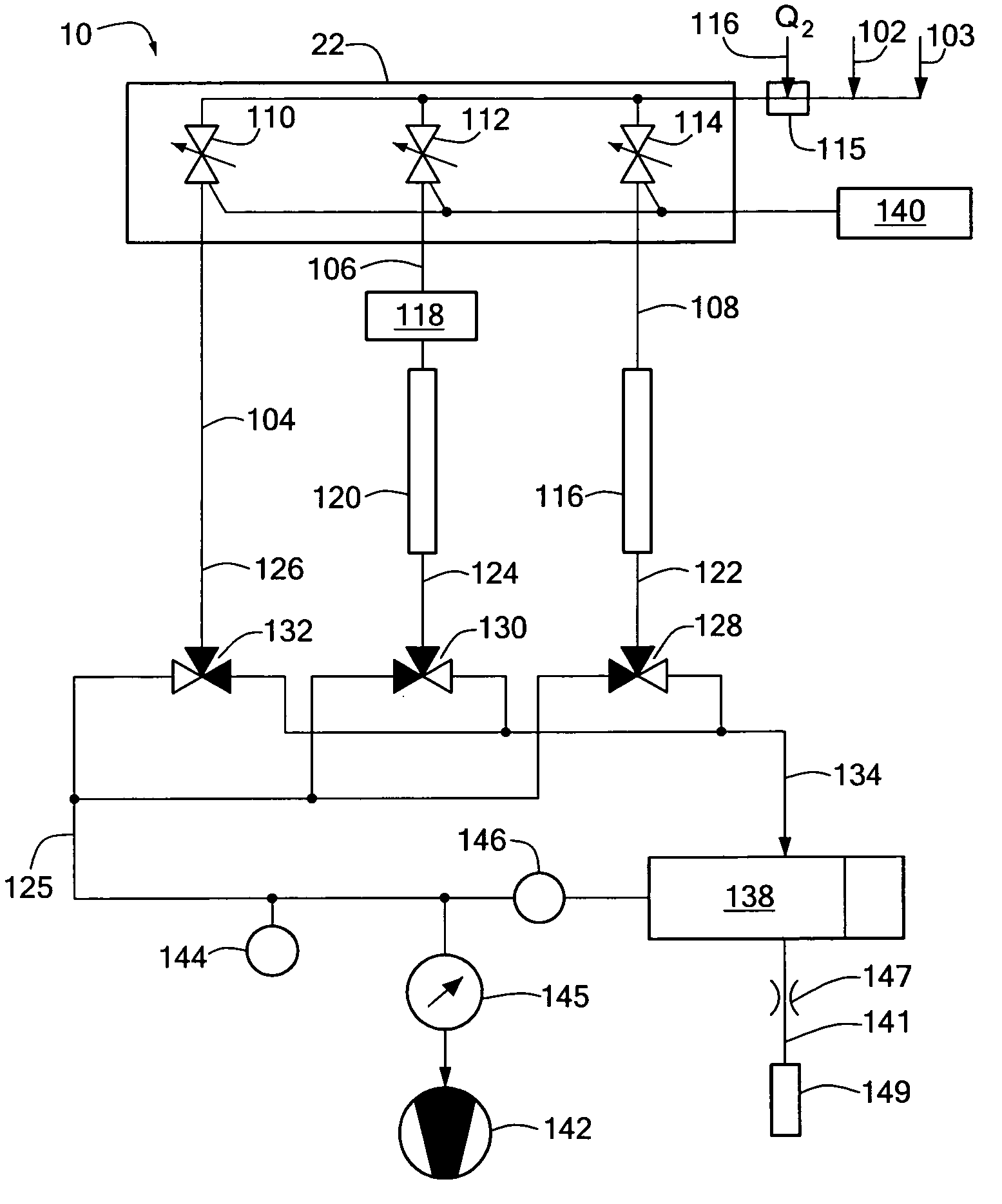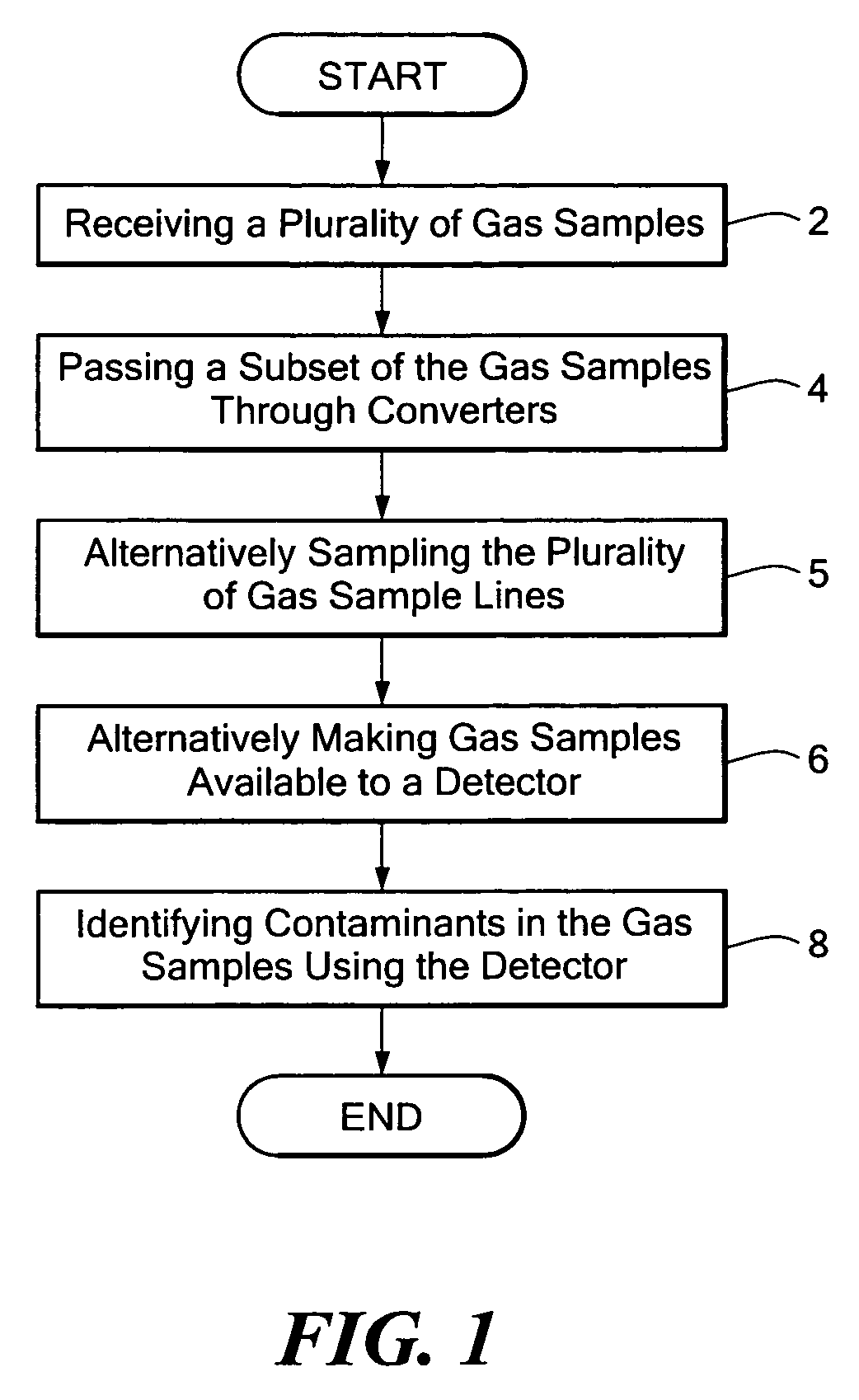Method and apparatus for improving measuring accuracy in gas monitoring systems
a technology of gas monitoring system and measuring accuracy, which is applied in the direction of gas analyser construction details, material electrochemical variables, and analysis of gaseous mixtures. it can solve the problems of increasing the incidence of defects, reducing device yield, and only filtration and measurement of ammonia in photolithographic processes. achieve accurate and repeatable measurement, facilitate the effect of monitoring such species
- Summary
- Abstract
- Description
- Claims
- Application Information
AI Technical Summary
Benefits of technology
Problems solved by technology
Method used
Image
Examples
Embodiment Construction
[0023] Embodiments disclosed herein regulate the flow rate of a gas sample to a detector by controlling the size of one or more variable orifices in the flow path of the gas sample to the detector. In an embodiment, a gas sampling subsystem employs one or more variable orifices in the flow path to regulate gas flow such that during detector measurements, the gas flow rate varies by less than about 0.5% from a target flow rate. In preferred embodiments, these variable orifices can comprise voltage sensitive orifices (VSO's). At substantially the same time, one or more VSO's outside the flow path of a gas sample flowing to the detector regulate the pressure of the gas sample being measured in the detector such that during detector measurements the pressure of the gas sample in the detector varies by less than about 0.5% from a target pressure. In this embodiment, substantially constant flow and pressure can be maintained independent of the length of the gas sample line being measured....
PUM
 Login to View More
Login to View More Abstract
Description
Claims
Application Information
 Login to View More
Login to View More - R&D
- Intellectual Property
- Life Sciences
- Materials
- Tech Scout
- Unparalleled Data Quality
- Higher Quality Content
- 60% Fewer Hallucinations
Browse by: Latest US Patents, China's latest patents, Technical Efficacy Thesaurus, Application Domain, Technology Topic, Popular Technical Reports.
© 2025 PatSnap. All rights reserved.Legal|Privacy policy|Modern Slavery Act Transparency Statement|Sitemap|About US| Contact US: help@patsnap.com



